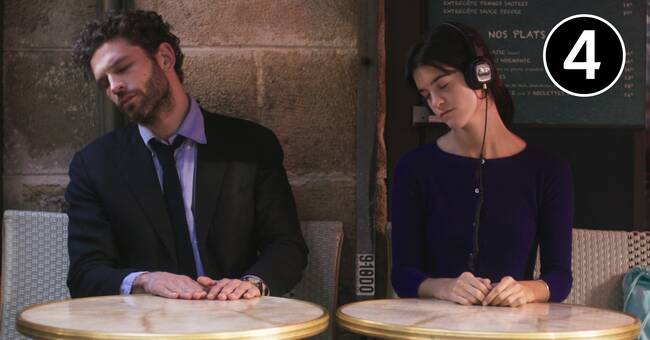Spring in Paris…
it's an extremely banal title, like a tired Woody Allen trifle.
We can blame the title on the Swedish distributors, the film is called in the original Seize printemps (Sixteen springs), but the premise also feels like old cupboard food: A young woman on the border between childhood and adulthood gets together with an older man and has to live out for the first time sin lust.
But the perspective is fresh. Debuting French star Suzanne Lindon was just 19 years old when she began production of this love poem about 16-year-old Suzanne who falls in love with 20-year-old Raphaël as an actress in the theater she passes on her way to school every day. Lindon, who wrote the script, directs and plays the lead role, approaches the subject with an obvious naivety that makes Spring in Paris burst with the bubbling intoxication of first love.
In French film passions
, the director (usually male) usually lets the camera pan back and forth over naked bodies, preferably the young woman's. Sexual desire is described as… sexual desire. Pang on beetroot with voyeuristic skin. I will not act as Prussiluskan and claim that it is automatically reprehensible, certainly not, but Suzanne Lindon's variant is still a nice break from all the stuttering that otherwise goes on on the big and small screen.
She has put together a love poem that is outdated chaste, without being puritanical.
Here desire and love are expressed instead with a kind of rhythmic synchronized movements in some kind of dance or soft movement scheme;
not entirely different from the Bollywood film where dance and song numbers may replace the landscape, but… no, still not really so, rather it is like a visualization of the union of souls.
Oops, now it sounded
very loud.
It is not.
Quite the opposite.
Casual and easy going.
Ethereal and down to earth at the same time.
Although I do not believe in a big difference between the female and male minds - the discrepancy is on the individual level rather than on the chromosome ditto - it would be tempting to say something about Spring in Paris being the answer to the question of how the female view of love can differ from the male.
On the other hand, the
character Suzanne is by no means a representative of the average teenage girl.
She does not feel at home among her peers, reads poems, listens passionately to classical music and is probably not seen crazy once with a mobile phone in her hand.
A little old fairy tale character, in a film that lacks an external conflict, apart from that with the age difference then.
But inside Suzanne it storms, as Suzanne Lindon suggests through a fantastic live use of all her nimble facial muscles.
Spring in Paris is a beautiful and airy short story in just 73 minutes.
It is not a great work (the grade four is shaky) but still one that lives on in the mind for a long time, thanks to its fluffy peculiar dreamy tone.
It is also a work that suggests that we have just witnessed the start of a brilliant film career.

